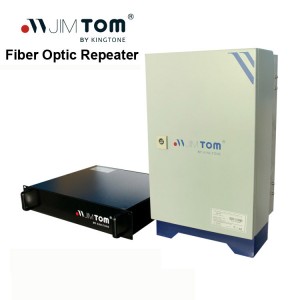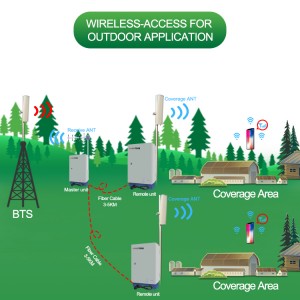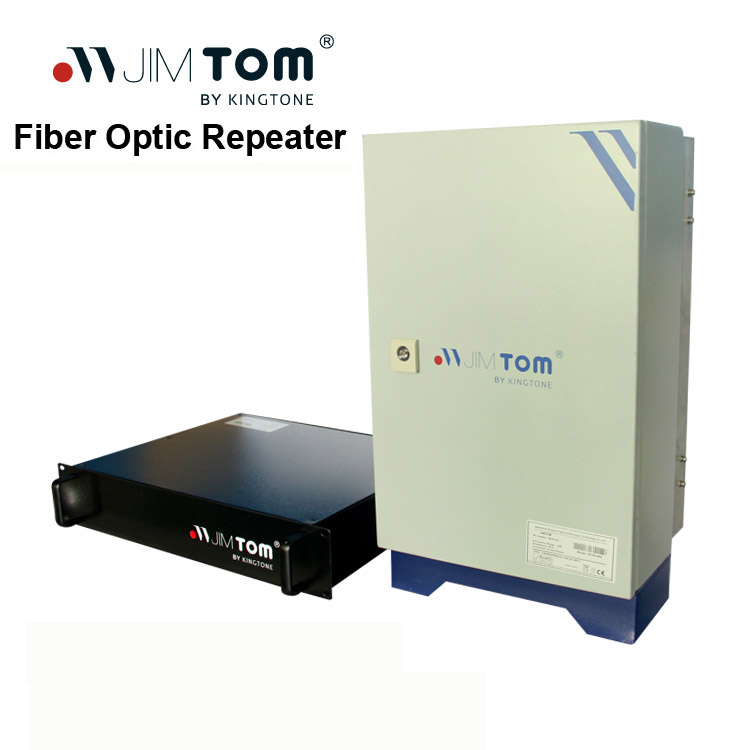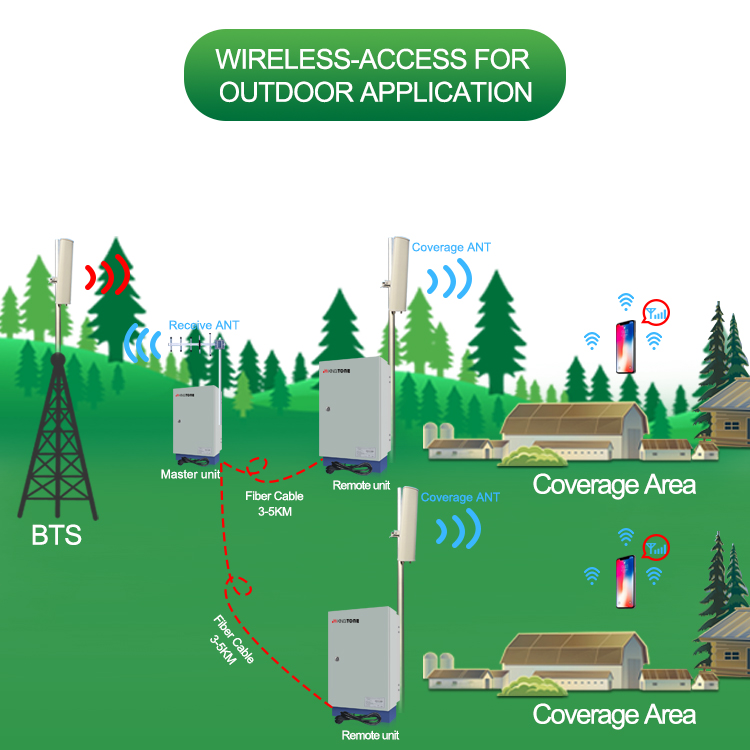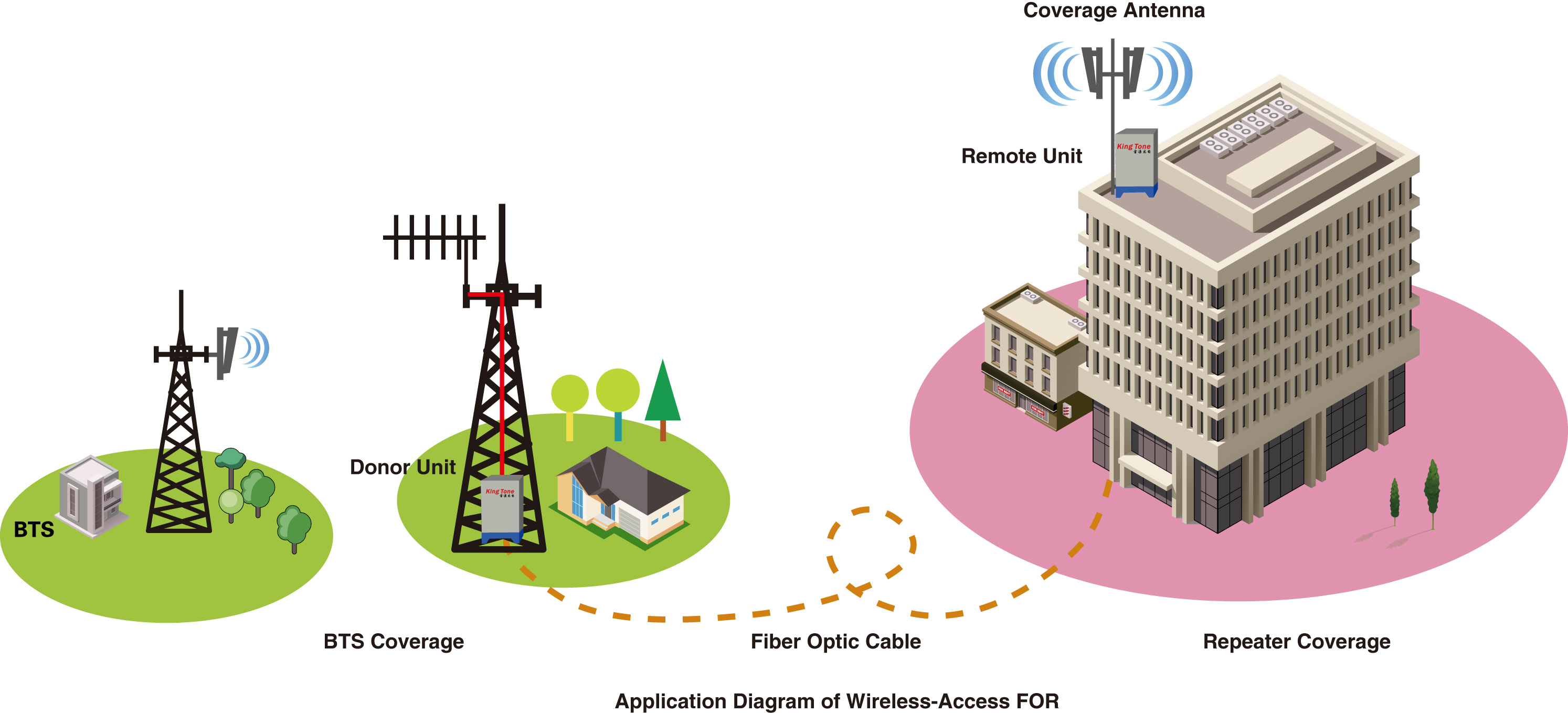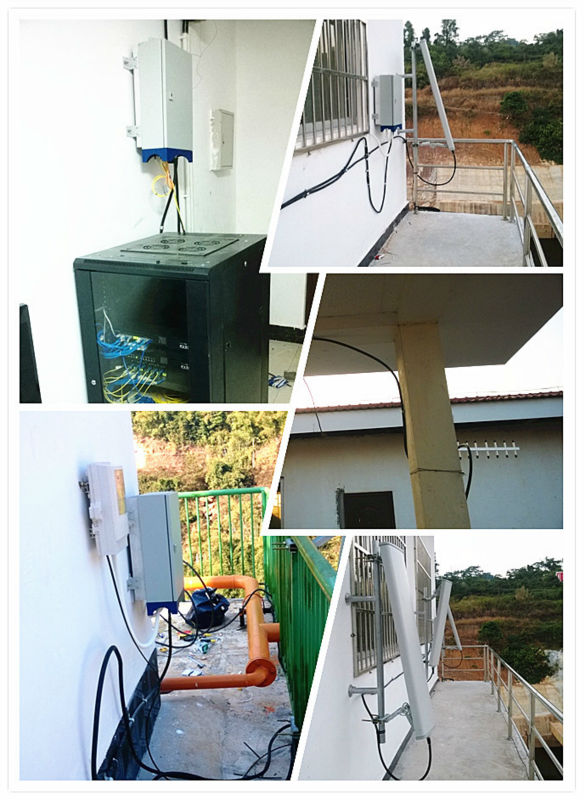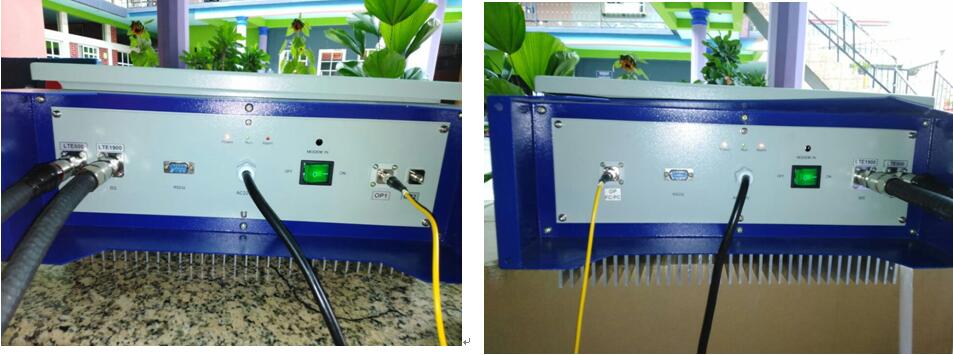Fiber Optic Cellular Repeaters (FOR) system is designed to solve problems of weak mobile cellular signal in the place that is far away from the BTS (Base Transceiver Station) and has fiber optic cable network underground.
Solve any hard-to-reach areas!
The whole FOR system consists of two parts: Donor Unit and Remote Unit. They transparently convey and amplify the wireless signal between the BTS (Base Transceiver Station) and mobiles via fiber optic cables.
The Donor unit captures the BTS signal via a direct coupler closed to the BTS (or via open air RF transmission through the Donor Antenna), then converts it into optic signal and transmits the amplified signal to the Remote Unit via fiber optic cables. The Remote Unit will reconvert the optic signal into RF signal and provide the signal to the areas where network coverage is inadequate. And the mobile signal is also amplified and retransmitted to the BTS via the opposite direction.
Kingtone Fiber Optic Repeaters system is designed to solve problems of weak mobile signal, which is much cheaper than setup a new Base Station (BTS). Main operation of RF Repeaters system: For the down link, signals from BTS is fed to Donor Unit (DOU), the DOU then convert RF signal to laser signal then feed to fiber to transmit to Remote Unit(ROU). RU then convert laser signal to RF signal, and use Power Amplifier to amplify to high power to IBS or coverage antenna. For the up link, Is a reverse process, signals from user mobile is fed to DOU’s MS port. Via duplexer, the signal is amplified by low noise amplifier to improve signal strength. Then the signals is fed to RF fiber optical module then converted to laser signals, then the laser signal is transmit to DOU, the laser signal from ROU is convert to RF signal by RF optical transceiver. Then the RF signals are amplified to more strength signals fed to BTS.
Features
- Aluminum-alloy casing has high resistance to dust, water and corroding;
- Omni-directional coverage antenna can be adopted to expand more coverage;
- Adopting WDM (Wavelength Division Multiplexing) module to realize long-distance transmission;
- Stable and improved signal transmission quality;
- One Donor Unit can support up to 4 Remote Units to maximize utilization of fiber optic cable;
- RS-232 ports provide links to a notebook for local supervision and to the built-in wireless modem to communicate with the NMS (Network Management System) that can remotely supervise repeater’s working status and download operational parameters to the repeater.
| Pro | Con |
|---|---|
|
|
DOU+ROU Whole System Technical Specification
|
Items |
Testing Condition |
Technical Specification |
Memo |
|
|
uplink |
downlink |
|||
|
Frequency Range |
Working in-band |
824MHz-849MHz |
869MHz-894MHz |
|
|
Max Bandwidth |
Working in-band |
25MHz |
|
|
|
Output Power (Max.) |
Working in-band |
37±2dBm |
43±2dBm |
Customized |
|
ALC(dB) |
Input add 10dB |
△Po≤±2 |
|
|
|
Max Gain |
Working in-band |
90±3dB |
90±3dB |
with 6dB optic path loss |
|
Gain Adjustable Range(dB) |
Working in-band |
≥30 |
|
|
|
Gain Adjustable Linear(dB) |
10dB |
±1.0 |
|
|
|
20dB |
±1.0 |
|
||
|
30dB |
±1.5 |
|
||
|
Ripple in Band(dB) |
Effective Bandwidth |
≤3 |
|
|
|
Max.input level |
Continue 1min |
-10 dBm |
|
|
|
Transmission Delay(us) |
Working in-band |
≤5 |
|
|
|
Noise Figure(dB) |
Working in-band |
≤5(Max.gain) |
|
|
|
Intermodulation Attenuation |
9kHz~1GHz |
≤-36dBm/100kHz |
|
|
|
1GHz~12.75GHz |
≤-30dBm/1MHz |
|
||
|
Port VSWR |
BS Port |
≤1.5 |
|
|
|
MS Port |
≤1.5 |
|||



